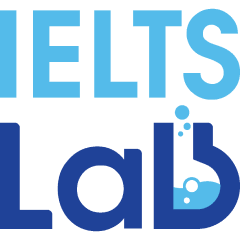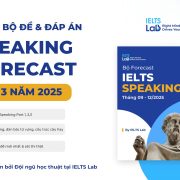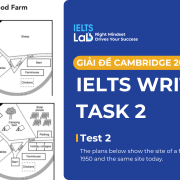Nếu còn mắc nhiều lỗi sai khi làm IELTS reading, việc dành thời gian phân tích và đọc giải thích trong các bài giải đề Cam 19 Test 3: Passage 2 – The global importance of wetlands dưới đây sẽ giúp các bạn nâng cao thần tốc kỹ năng Reading của mình trong thời gian ngắn. Đây cũng là nguồn đề sát với đề thi thật nhất trong vô số các tài liệu hiện nay

A. Đáp án
| Câu 14: G |
Câu 18: carbon | Câu 22: Subsidence (Sụt, Lún) | Câu 26: B |
| Câu 15: A | Câu 19: fires | Câu 23: A | |
| Câu 16: H | Câu 20: biodiversity | Câu 24: C | |
| Câu 17: B | Câu 21: Ditches | Câu 25: D |
B. Giải thích đáp án đề Cam IELTS 19, Test 2, Reading Passage 2
| Câu hỏi + Đáp án | Bài đọc |
|
Câu 14: reference to the need to ensure that inhabitants of wetland regions continue to benefit from them => G:Phù hợp về keywords “Need”. Chú ý keywords “ Local people = Inhabitants of wetlands”, “Value and |
Silvius also acknowledges the importance of income generation. ‘It’s not that we just want 10 restore the biodiversity of wetlands — which we do — but we recognise there’s a need 10 provide an income for local people.’ This approach is supported by IWMI “The idea is that people in a developing country will only protect wetlands if they value and profit from them,” says McCartney. ‘For sustainability, it’s essential that local people are involved in wetland planning and decision making and have clear rights to use wetlands. |
| Câu 15 : the proportion of wetlands which have already been lost
=>. A: Chú ý keywords “Half = Proportion (Tỉ lệ phần trăm)”, “Have disappeared = Have been lost” |
But according to the World Wide Fund for Nature (WWFN), half of the world’s wetlands have disappeared since 1990 — converted or destroyed for commercial development, drainage schemes and the extraction of minerals and peat |
| Câu 16: Reference to the idea that people are beginning to appreciate the value of wetland
=> H: Chú ý keywords “ Awareness of the importance = Appreciate (trân trọng)”, “Growing ~ Beginning” |
McCartney is cautiously optimistic, however. * Awareness of the importance of wetlands is growing,” he says. ‘It’s true that wetland degradation still continues at a rapid pace, but my impression is that things are slowly changing. |
| Câu 17: mention of the cultural significance of wetlands
=>B: Chú ý keywords “ Important part in human development, Of considerable value (Có giá trị to lớn), Support well-being ( góp phần cho hạnh phúc” ~ Cultural significance (Quan trọng về mặt văn hóa) Đại ý: Wetlands đóng vai trò quan trọng trong rất nhiều mặt của cuộc sống của hang triệu người => Có giá trị về văn hóa, đời sống. |
Throughout history, humans have gathered around wetlands, and their fertile ecosystems have played an important part in human development. Consequently, they are of considerable religious, historical and archaeological value to many communities around the world. ‘Wetlands directly support the livelihoods and well-being of millions of people,” says Dr Matthew McCartney, principal researcher and hydrologist at the International Water Management Institute (IWMI). ‘In many developing countries, large numbers of people are dependent on wetland agriculture for their livelihoods.” |
|
Câu 18: Peatlands which have been drained begin to release…..instead of storing it. => Carbon: Chú ý keywords “Emit=Release (Xả ra)”, Còn lại phù hợp về các keyword khác: Drain (cạn kiệt) |
The world’s wetlands are, unfortunately, rich sources for in-demand commodities, such as palm oil and pulpwood. Peatlands — wetlands with a waterlogged organic soil layer — are particularly targeted. When peatlands are drained for cultivation, they become net carbon emitters instead of active carbon stores, and, according to Marcel Silvius, head of Climate- smart Land-use at WI, this practice causes six per cent of all global carbon emissions. The clearance of peatlands for planting also increases the risk of forest fires, which release huge amounts of CO,. “We’re seeing huge peatland forests with extremely high biodiversity value being lost for a few decades of oil palm revenues,” says Silvius. |
| Câu 19: Once peatland areas have been cleared,….are more likely to occur.
=> Fires: Chú ý keywords “Clearance = Cleared (Xóa bỏ), “ Increase the risk of (Tăng nguy cơ) ~ More |
|
| Câu 20: Clearing peatland forests to make way for oil palm plantations destroys the……..of the local environment.
=> Biodiversity: Phù hợp keyword “ Peatland forests”, Palm”. Chú ý keywords “Being lost = Destroy” |
|
| Câu 21: Water is drained out of peatlands through the…… which are created by logging companies.
=> Ditches (Kênh/ Mương): Phù hợp keyword “Logging companies (Cty khai thác gỗ), “Water drained out of”. Chú ý keywords “ These are (Những cái mương này) = Which are” |
The damage starts when logging companies arrive to clear the trees. They dig ditches to enter the peat swamps by boat and then float the logs out the same way. These are then used to drain water out of the peatlands to allow for the planting of corn, oil palms or pulpwood trees. Once the water has drained away, bacteria and fungi then break down the carbon in the peat and turn it into CO; and methane. Meanwhile, the remainder of the solid matter in the peat starts to move downwards, in a process known as subsidence”. Peat comprises 90 percent water, so this is one of the most alarming consequences of peatland clearances. “In the tropics, peat subsides at about four centimeters a year, so within half a century, very large landscapes on Sumatra and Borneo will become flooded as the peat drops below water level,” says Silvius. ‘I’s a huge catastrophe that’s in preparation. Some provinces will lose 40 per cent of their landmass. |
| Câu 22: Draining peatlands leads to….: a serious problem which can eventually result in coastal flooding and land loss.
=> Subsidence (Sụt, Lún): Chú ý keywords “ Alarming consequence (Hậu quả báo động)= Serious problem (vấn đề nghiêm trọng”, “Become flooded ~ Flooding”, “Lose landmass = Land loss”. |
| Câu 23: Communities living in wetland regions must be included in discussions about the future of these areas.
=> A: Chú ý keywords: “Local people ~ Communities living in wetland regions”, “Included = Involved”, “Planning + Decision making = Discussion+ Future” |
For sustainability, it’s essential that local people are involved in wetland planning and decision making and have clear rights to use wetlands. |
| Câu 24: Official policies towards wetlands vary from one nation to the next.
=> C: Chú ý keywords: “Different ~ Vary (Thay đổi, khác nhau)”, “Governments = |
The fortunes of wetlands would be improved, Silvius suggests, if more governments recognised their long-term value. ‘Different governments have different attitudes,” he says… |
| Câu 25: People cause harm to wetlands without having any intention to do so.
=> D Phù hợp về mặt ý “ Chưa gặp ai có ý định làm hại wetlands+ không phải là điều mà |
Tickner does not blame anyone for deliberate damage, however. ‘I’ve worked on wetland issues for 20 years and have never met anybody who wanted to damage a wetland,” he says. “It isn’t something that people generally set out to do. Quite often, the effects simply come from people trying to make a living.” |
| Câu 26: Initiatives to reverse environmental damage need not be complex..
=> B: Chú ý keywords “Restore the forest (Phục hồi rừng) ~ Reverse environmental / damage (Khắc phục thiệt hại môi trường)”, “As simple as/ Isn’t so much about money ~ Not complex” |
‘They also serve a crucial environmental purpose. ‘Wetlands are one of the key tools in mitigating climate change across the planet,” says Pieter van Eijk, head of Climate Adaptation at Wetlands International (WI), pointing to their use as buffers that protect coastal areas from sea-level rise and extreme weather events such as hurricanes and flooding. Wetland coastal forests provide food and water, as well as shelter from storms, and WI and other agencies are working to restore those forests which have been lost. *It can be as simple as planting a few trees per hectare to create shade and substantially change a microclimate,” he says. ‘Implementing climate change projects isn’t so much about money.” |
Trên đây là toàn bộ đáp án và những phân tích của đội ngũ học thuật của IELTS Lab cho phần giải đề Cam 19, Test 3, Reading Passage 2: The global importance of wetlands. Chúc các bạn học tốt!
>> Tham khảo thêm: https://www.youtube.com/watch?v=hT4uSyRrUE4
>> Đọc thêm: https://ieltslab.edu.vn/cach-lam-dang-bai-matching-infomation-trong-ielts-reading/


















Trả lời